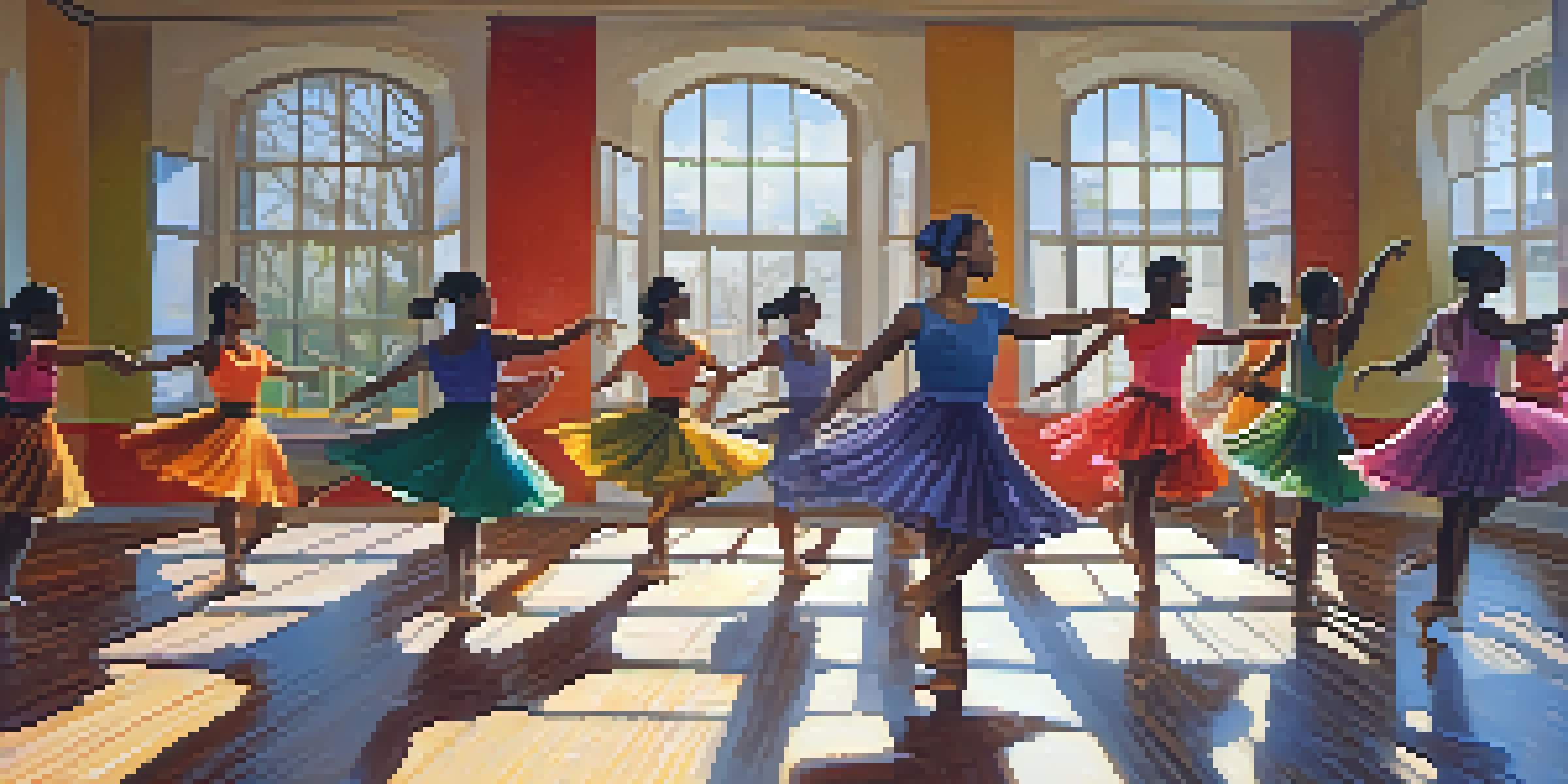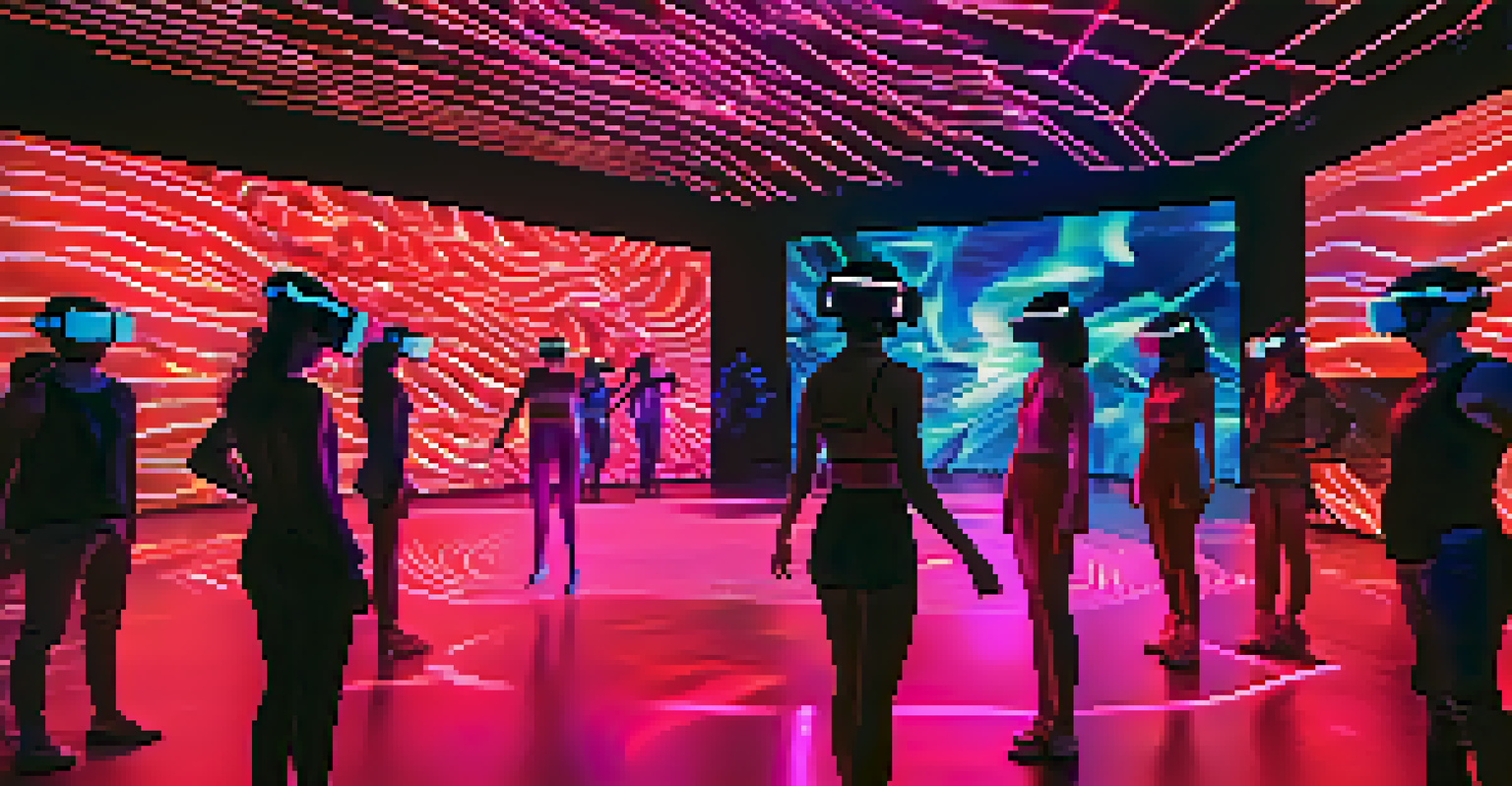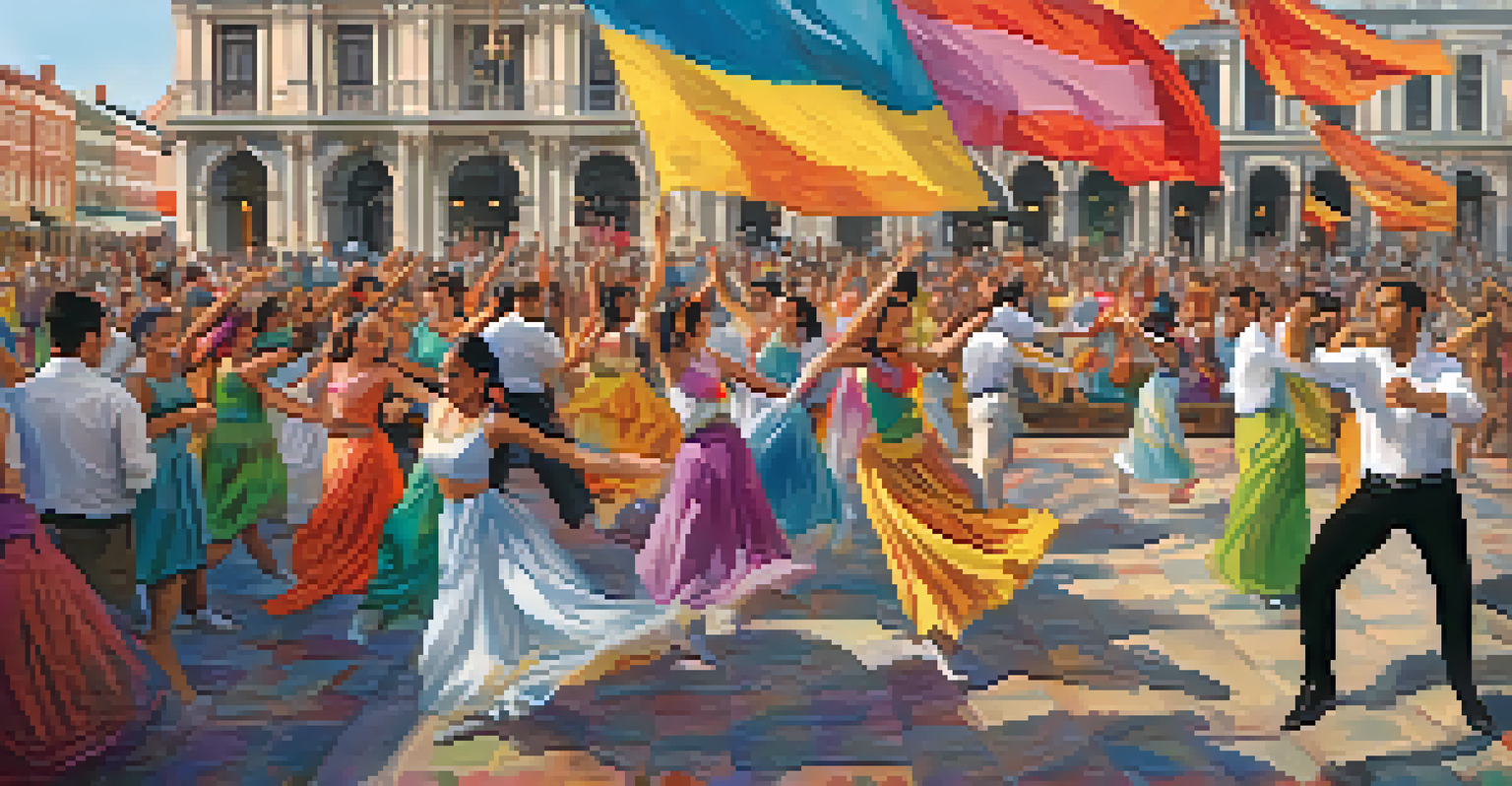The Evolution of Dance Collaborations Through Technology

Understanding Dance Collaborations: A Historical Perspective
Dance collaborations have always been a vital part of the art form, allowing artists to blend styles, skills, and cultures. Historically, these partnerships thrived in local communities, where dancers and choreographers would come together to create unique performances. Over time, as the world became more connected, these collaborations began to transcend geographical boundaries, leading to more diverse and innovative dance expressions.
Dance is the hidden language of the soul.
From traditional folk dances that united communities to the emergence of ballet and contemporary dance, each era saw unique collaborations that pushed artistic boundaries. Early on, the lack of technology limited the reach and scale of these collaborations, often confining them to specific locales. However, as communication improved, so did the potential for artistic partnerships across long distances.
Today, we see how the fusion of diverse dance styles has enriched the art form, resulting in performances that resonate globally. This evolution reflects not only artistic growth but also the changing dynamics of how dancers and choreographers collaborate with one another.
The Role of Technology in Modern Dance Collaborations
Technology has fundamentally transformed how dance collaborations occur, enabling artists to connect and create in ways previously unimaginable. Digital communication tools like video conferencing and social media platforms allow dancers from different corners of the world to share ideas, choreograph together, and even rehearse virtually. Imagine a dancer in New York collaborating with a choreographer in Tokyo—all through the power of technology.

Moreover, tools like cloud storage and project management software have streamlined the creative process, making it easier to share resources, feedback, and revisions in real time. This has not only enhanced productivity but also fostered a sense of community among dancers who might never meet face-to-face. The ability to exchange ideas instantly has led to a surge in innovative choreographic styles and collaborations.
Tech Transforms Dance Collaborations
Technology has revolutionized how dancers connect and collaborate, enabling virtual rehearsals and creative partnerships across the globe.
In this digital age, technology serves as a bridge, allowing diverse artistic voices to merge and explore new creative territories. The result is a rich tapestry of dance that reflects a variety of cultural influences and artistic visions, showcasing the power of collaboration.
The Impact of Social Media on Dance Collaborations
Social media has become a crucial platform for dancers to connect, share, and collaborate. Platforms like Instagram and TikTok have not only democratized dance but also created a space where artists can showcase their work and engage with audiences directly. This has led to the rise of viral dance challenges, where dancers from around the globe participate in the same choreography, fostering a sense of unity and collaboration.
Technology is best when it brings people together.
Additionally, social media allows dancers to discover and reach out to potential collaborators easily. A single viral video can spark connections between artists who share similar styles or visions, leading to exciting new partnerships. The informal nature of these platforms encourages experimentation and creativity, as dancers feel more empowered to share their ideas without the constraints of traditional performance venues.
As a result, social media has not only expanded the audience for dance but has also redefined what collaboration looks like in the modern world. The ease of sharing and connecting has led to a thriving global dance community, where collaborations are born out of curiosity and a shared passion for movement.
Innovative Technologies Shaping Dance Collaborations
Emerging technologies like augmented reality (AR) and virtual reality (VR) are revolutionizing dance collaborations, providing new ways for artists to create and perform. Imagine putting on a VR headset and stepping into a digital world where you can dance alongside holograms of your favorite performers. These technologies allow dancers to experiment with their art in immersive environments, creating experiences that blend the physical and digital realms.
Additionally, motion capture technology enables choreographers to analyze and refine their movements with precision. By capturing a dancer's performance digitally, choreographers can manipulate and experiment with movements, creating entirely new compositions. This not only enhances creativity but also pushes the boundaries of what dance can be.
Social Media Unites Dancers Worldwide
Social media platforms have created a space for dancers to share, collaborate, and engage with audiences, fostering a sense of global community.
The integration of technology into dance is opening doors to innovative collaborations that were once thought to be impossible. As artists continue to explore these new tools, they are crafting performances that challenge our perceptions and engage audiences in exciting ways.
The Globalization of Dance through Technology
As technology continues to bridge geographical divides, dance has become a truly global art form. Collaborations that once required extensive travel can now happen digitally, connecting artists from vastly different cultures and backgrounds. This globalization enriches the dance landscape, allowing for an exchange of ideas and styles that enhance the creative process.
Dancers today can draw inspiration from a multitude of sources, blending traditional forms with contemporary techniques from around the world. This cross-cultural exchange not only creates unique performances but also promotes understanding and appreciation of diverse dance styles. For example, a hip-hop dancer might incorporate elements of traditional Indian dance, resulting in a fusion that captivates audiences.
The ability to collaborate on a global scale is reshaping dance into a more inclusive and dynamic art form. As artists continue to connect and innovate, the future of dance is sure to reflect the rich tapestry of human experience across cultures.
Challenges of Technology in Dance Collaborations
While technology has opened many doors for dance collaborations, it also presents certain challenges. One significant issue is the potential for miscommunication, especially when collaborating with artists from different cultural backgrounds. Without face-to-face interaction, nuances in choreography or artistic intent can sometimes be lost, leading to misunderstandings and frustration.
Moreover, the reliance on technology can sometimes overshadow the essence of dance itself. The human connection, the energy exchanged between performers, is a vital component of dance that may not always translate well in a virtual setting. As artists navigate this new landscape, finding a balance between technology and the intrinsic elements of dance becomes essential.
Globalization Enhances Dance Diversity
The globalization of dance through technology allows for rich cross-cultural exchanges, resulting in innovative performances that blend various styles.
Additionally, not all dancers have equal access to technology, which can create disparities in collaboration opportunities. Ensuring that all artists can participate and benefit from these technological advancements is crucial for fostering an inclusive dance community.
The Future of Dance Collaborations in a Tech-Driven World
Looking ahead, the future of dance collaborations is likely to be shaped by the continued evolution of technology. As emerging tools and platforms develop, dancers will have even more opportunities to connect and create. Innovations like AI-assisted choreography or advanced motion tracking could further enhance the collaboration process, allowing artists to explore new creative avenues.
Moreover, as the dance community embraces technology, we can expect to see an increase in hybrid performances that blend live and digital elements. This could revolutionize how audiences experience dance, allowing for interactive performances that engage viewers in real-time. The possibilities are endless, and artists are already experimenting with these new formats.

Ultimately, as technology continues to evolve, so will the ways in which dancers collaborate. The future promises a vibrant and dynamic landscape where creativity knows no bounds, and the art of dance continues to flourish in an interconnected world.